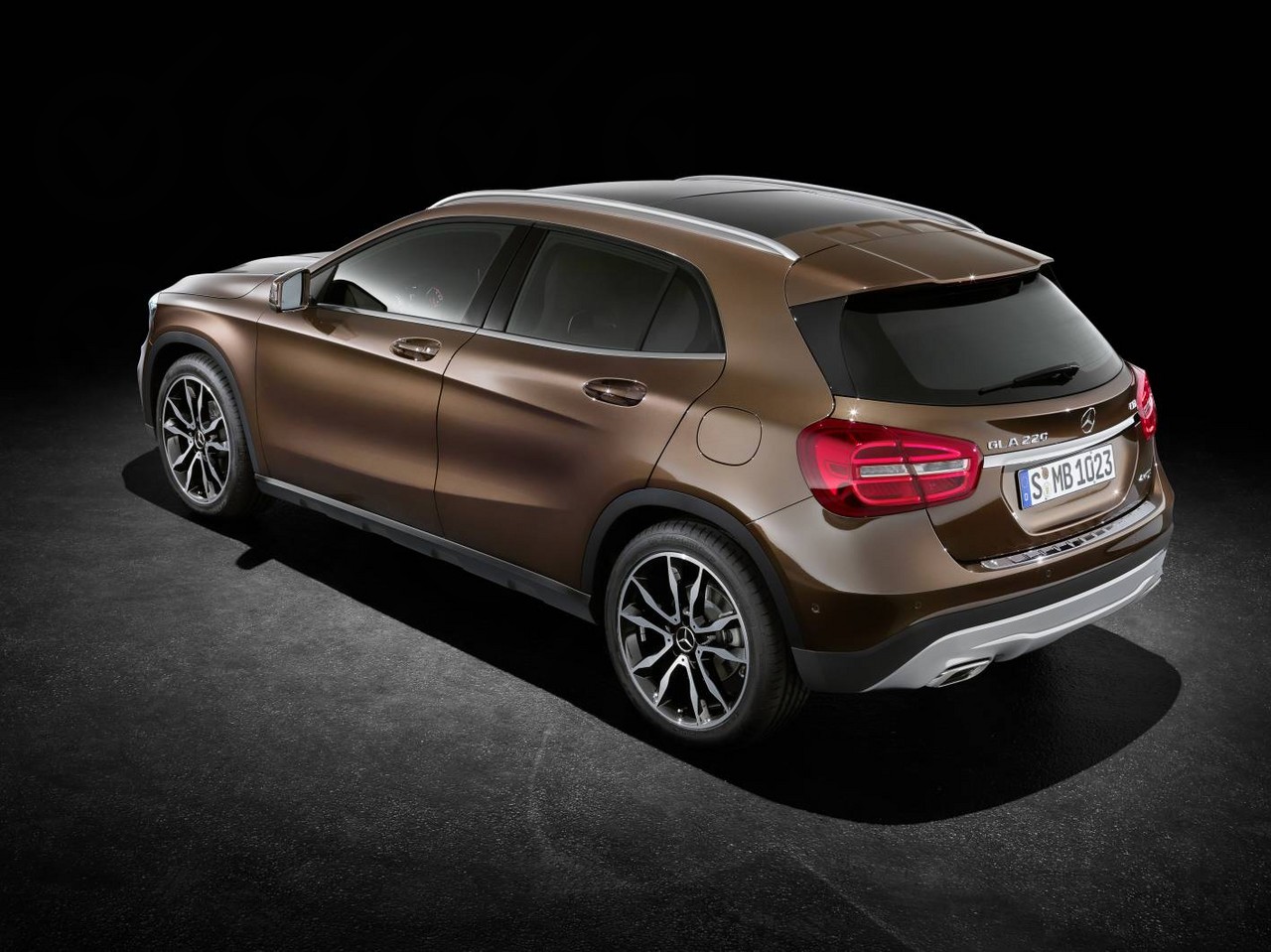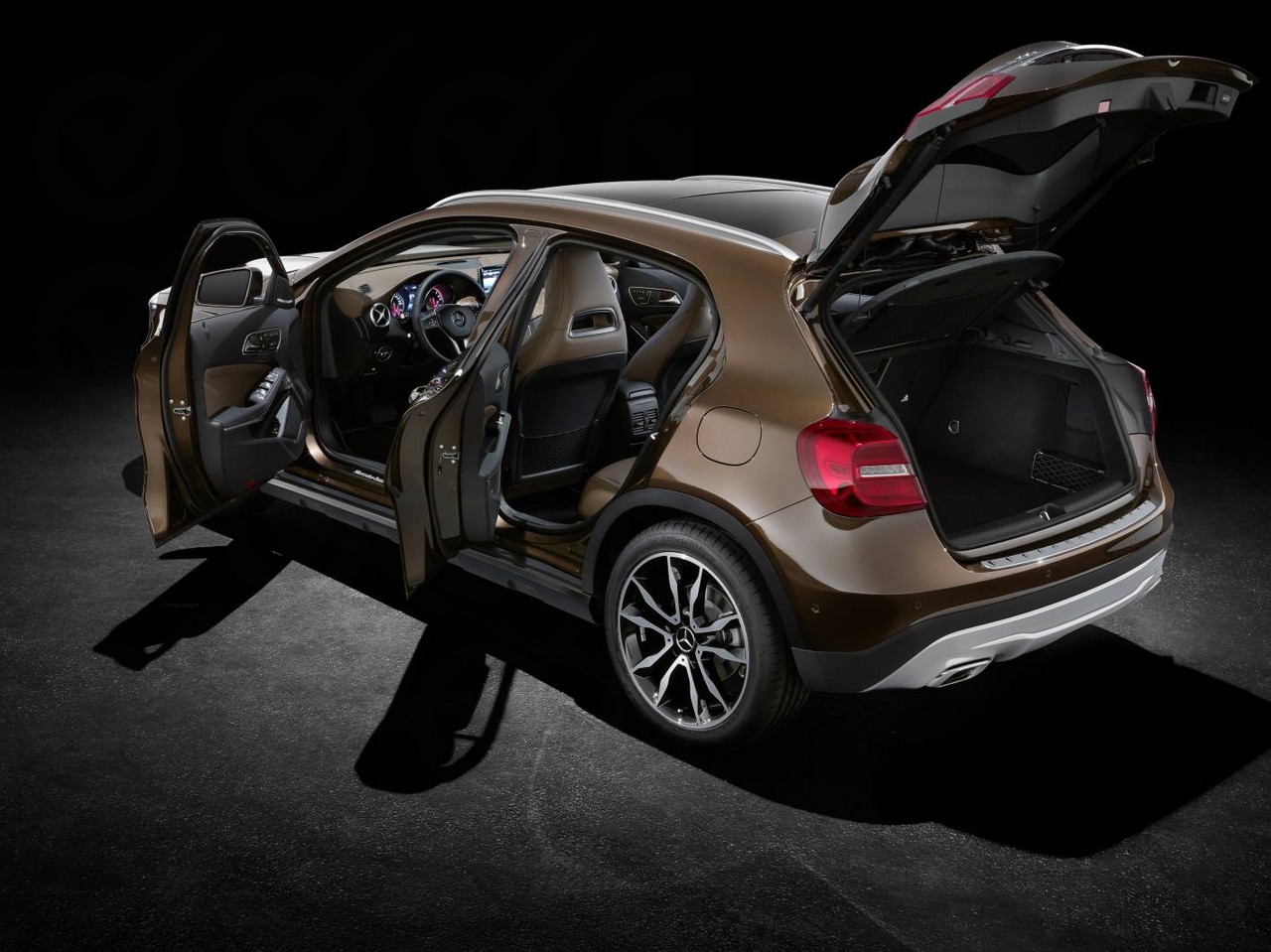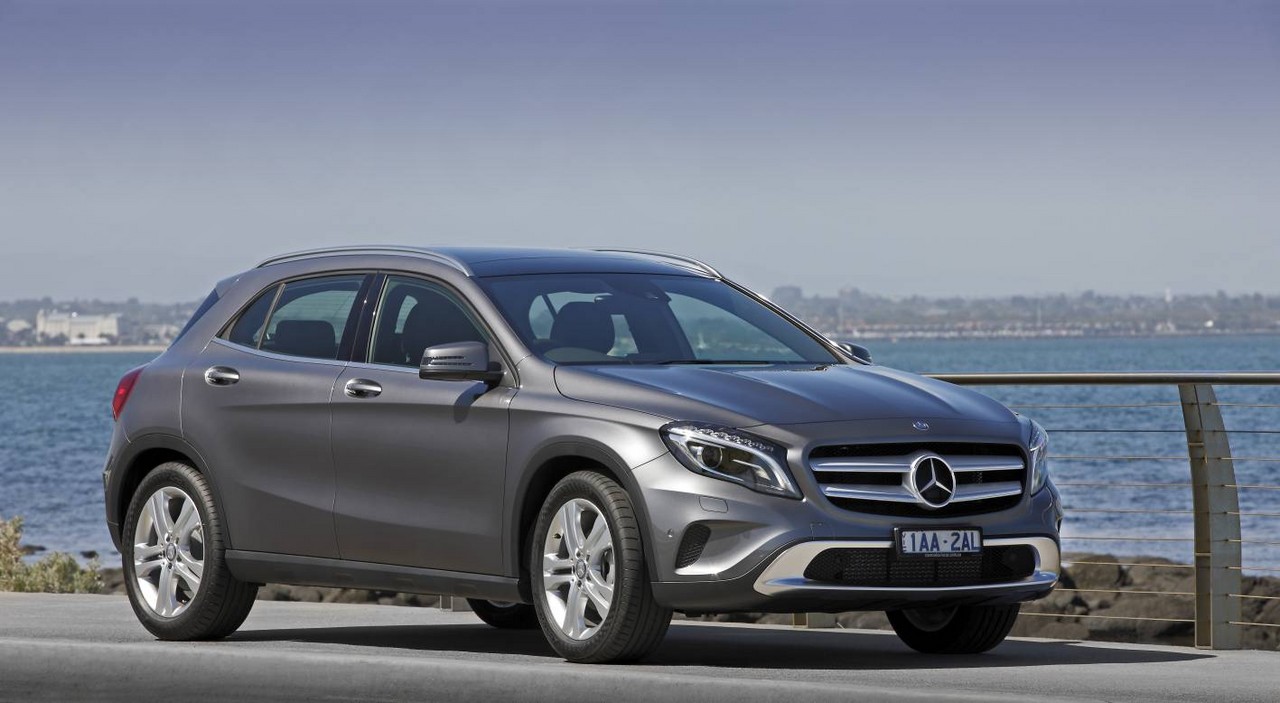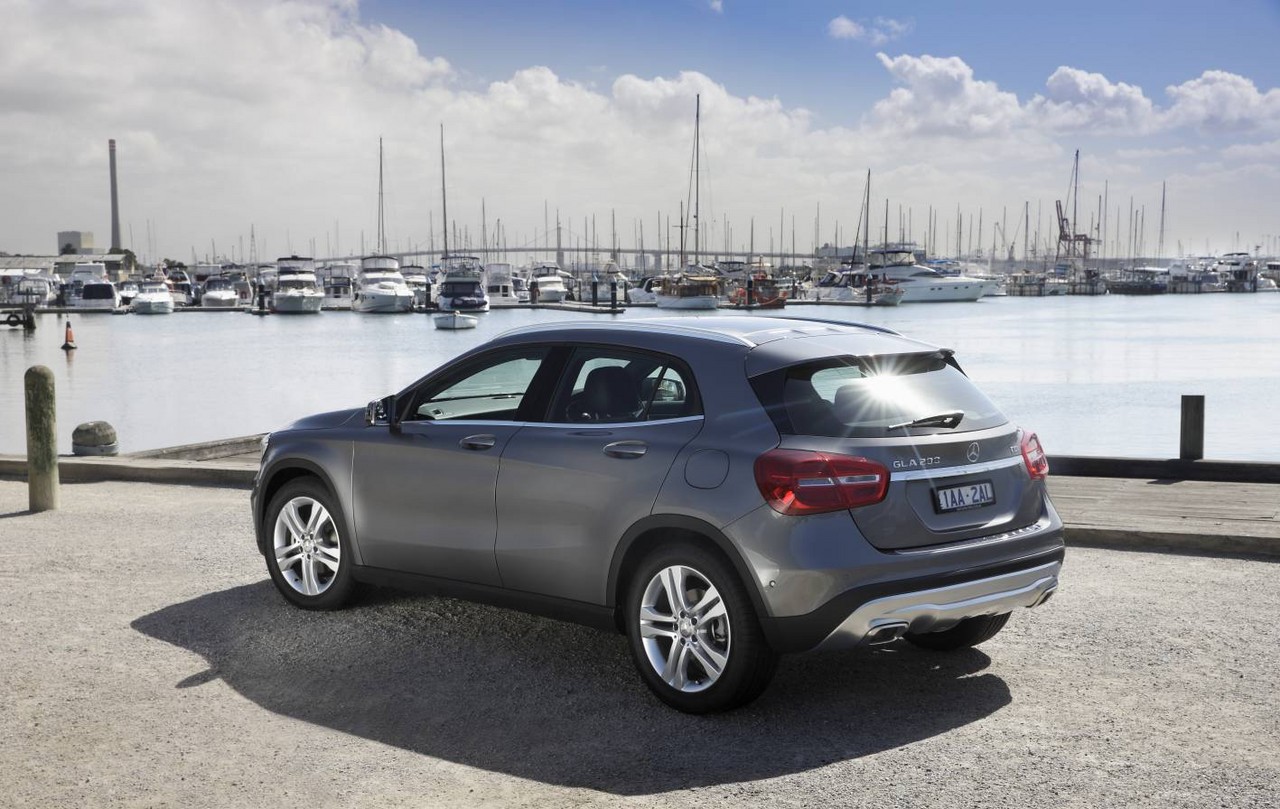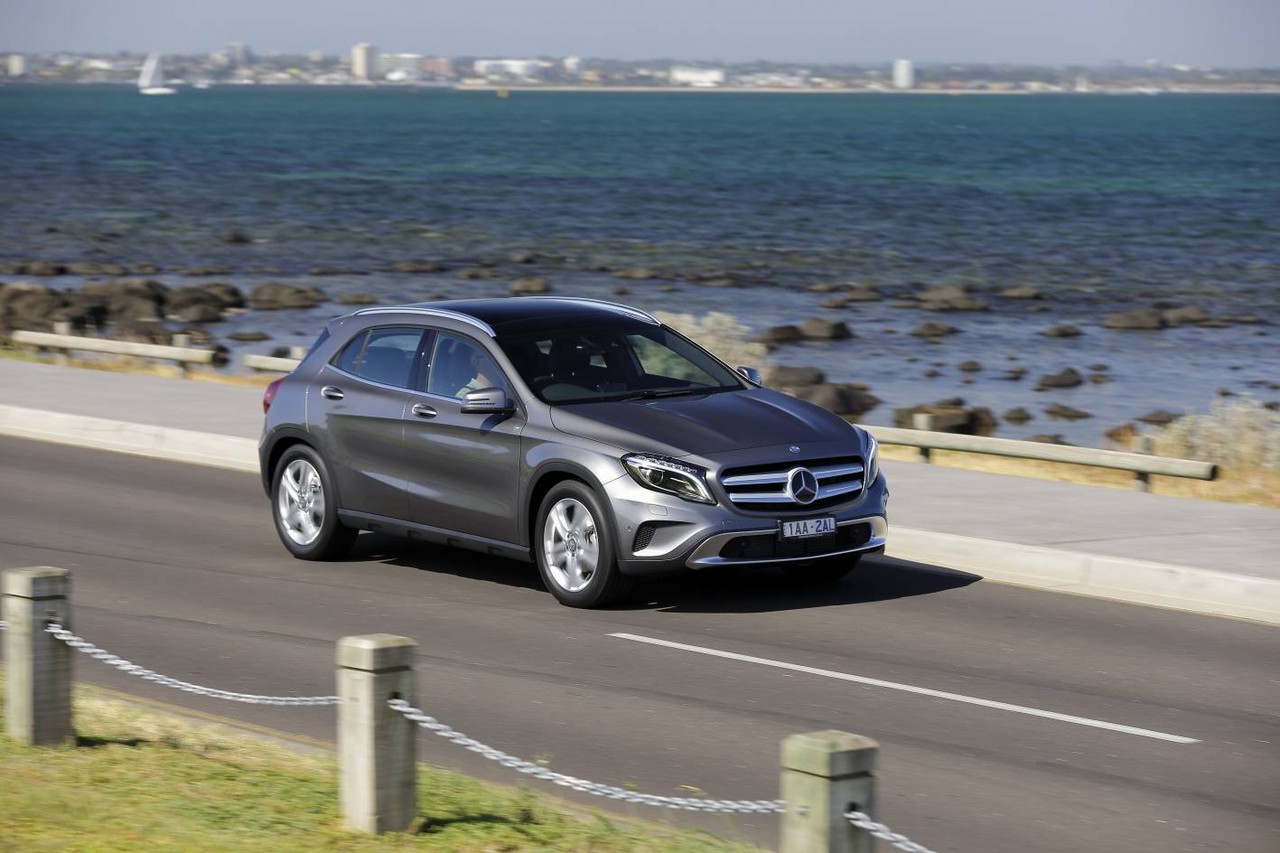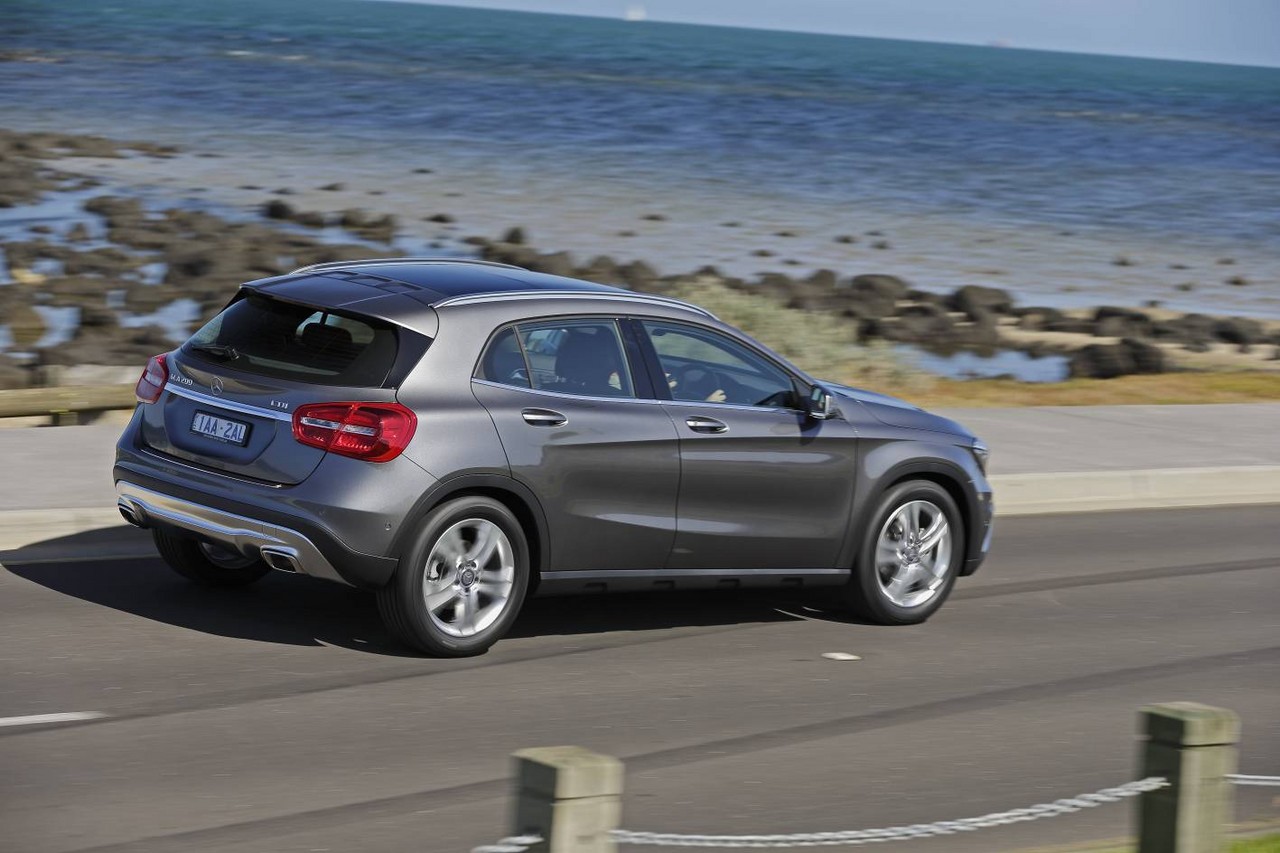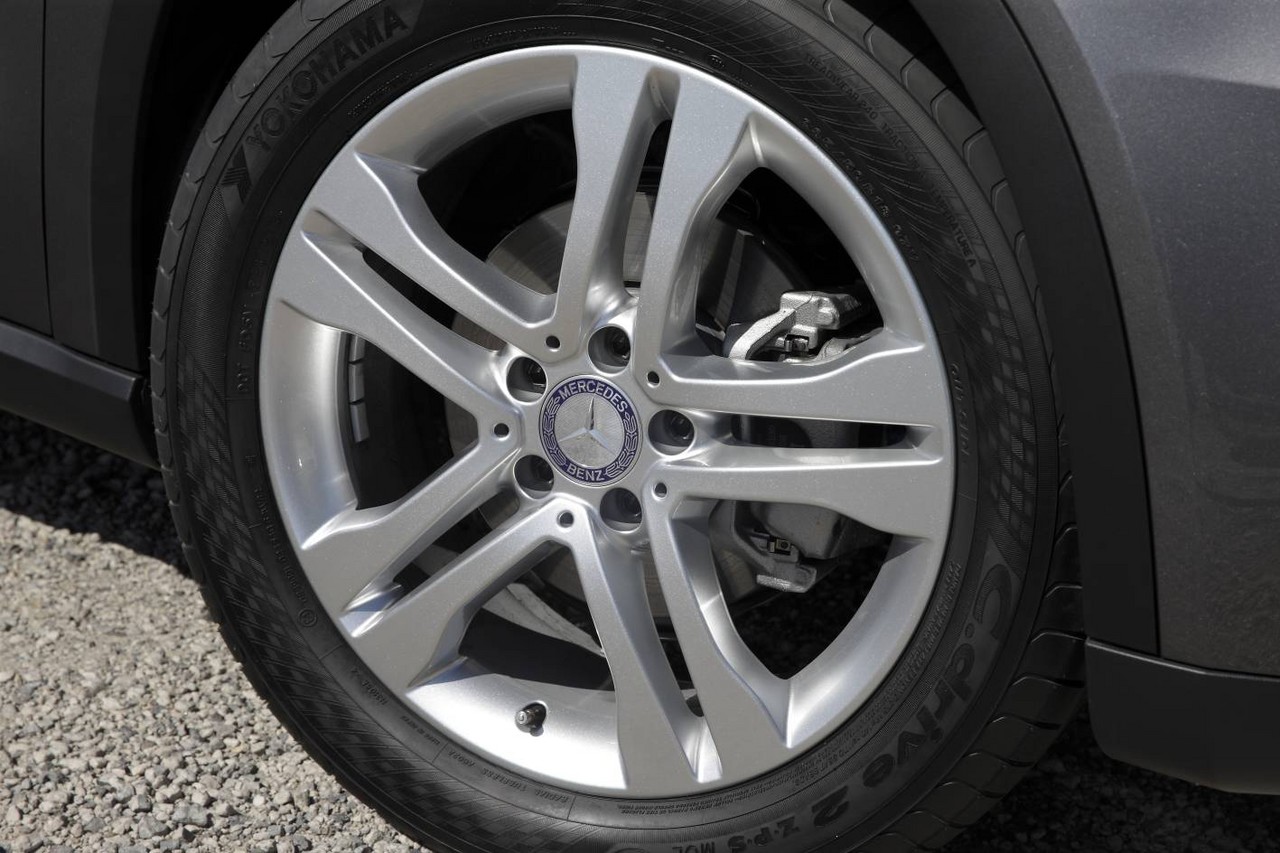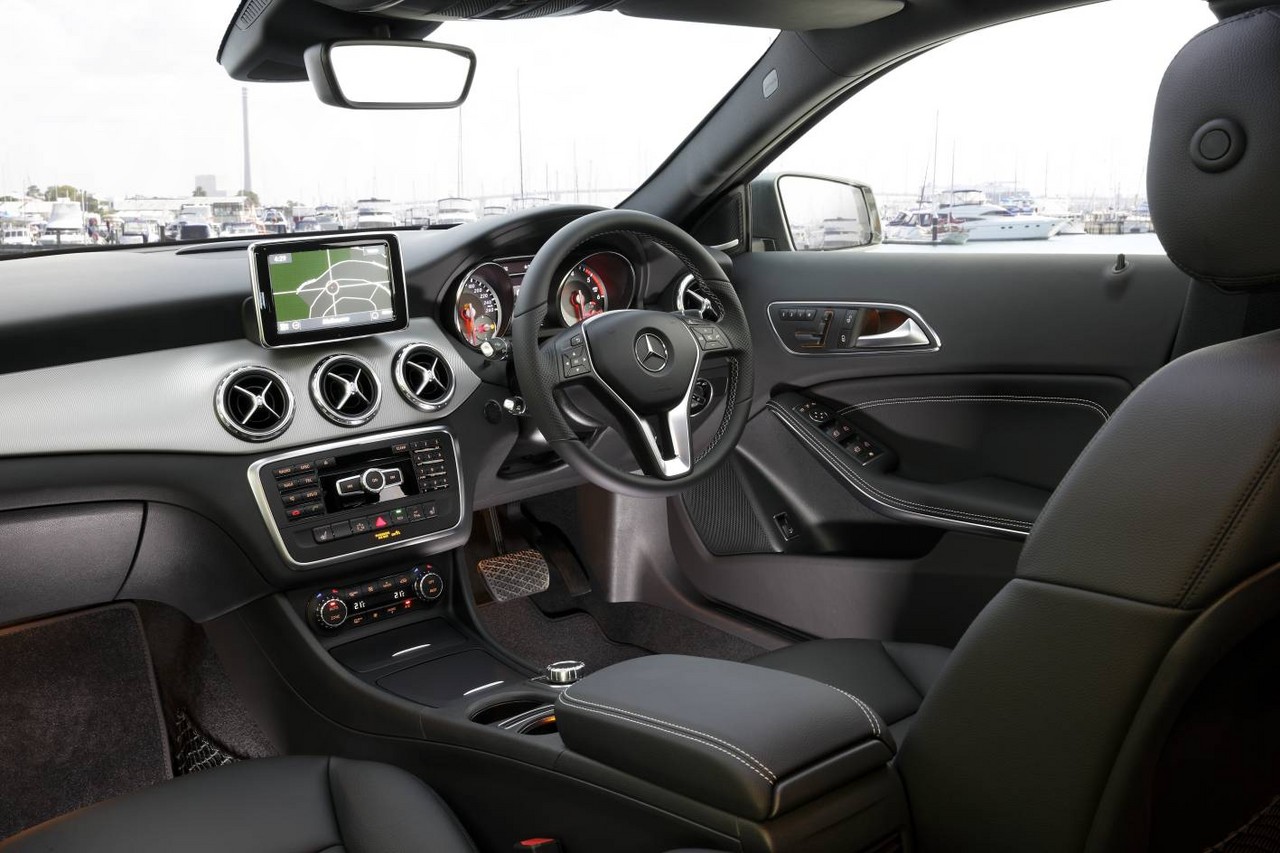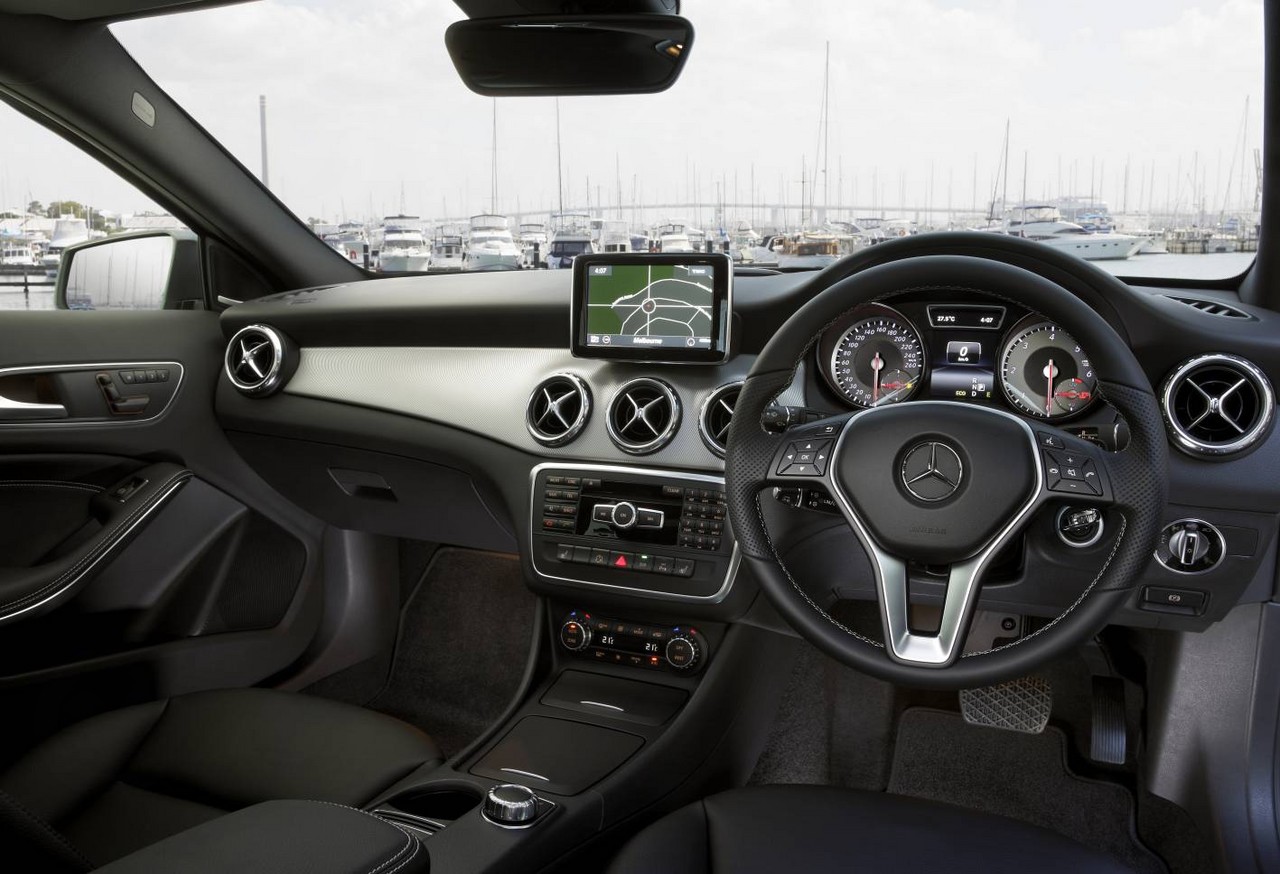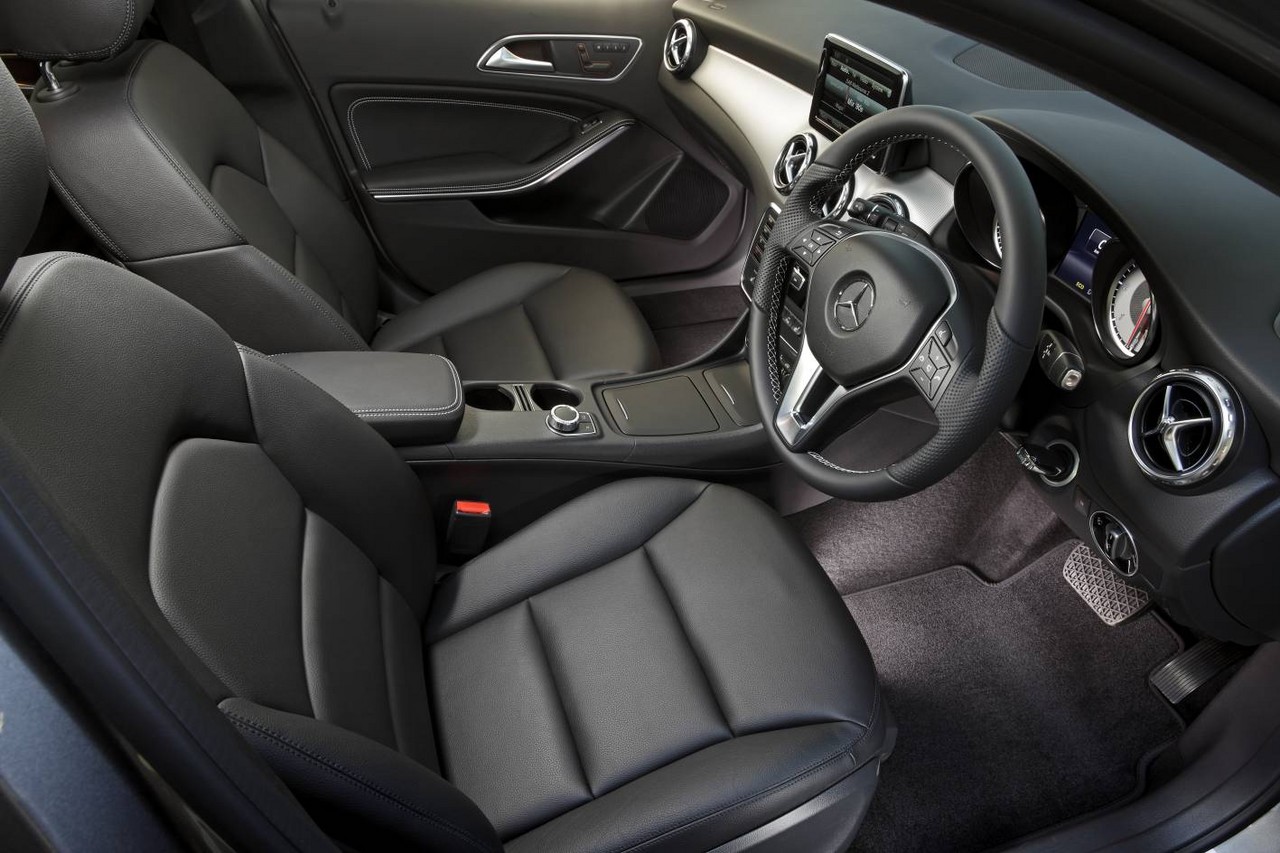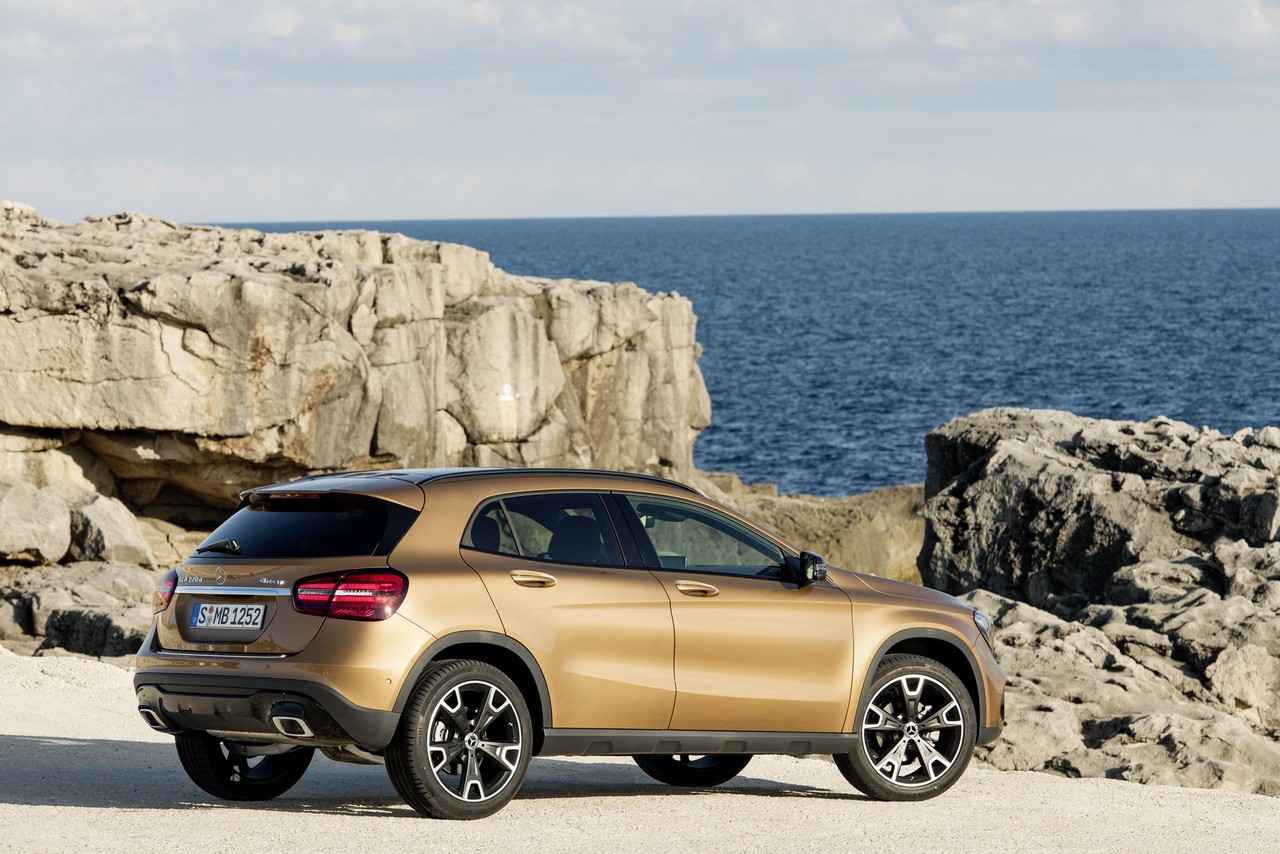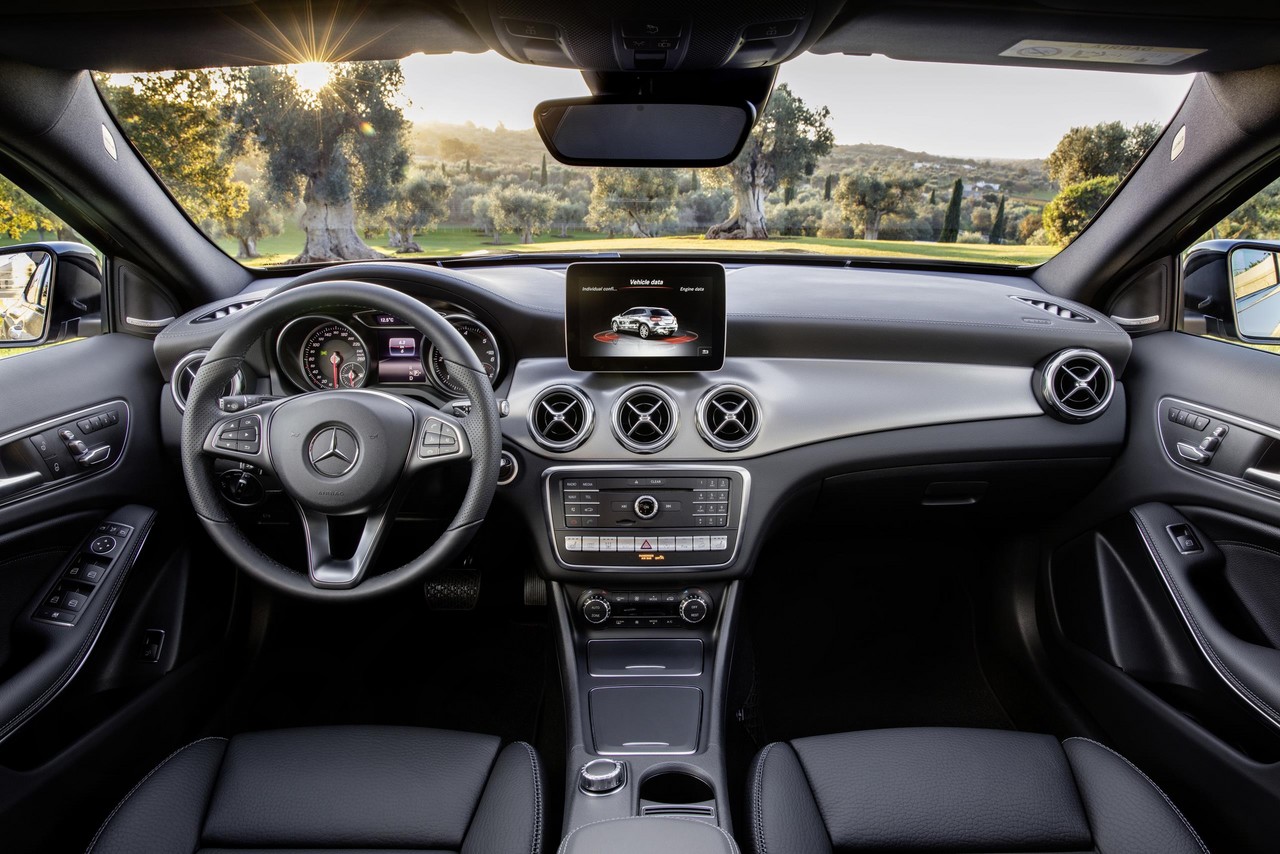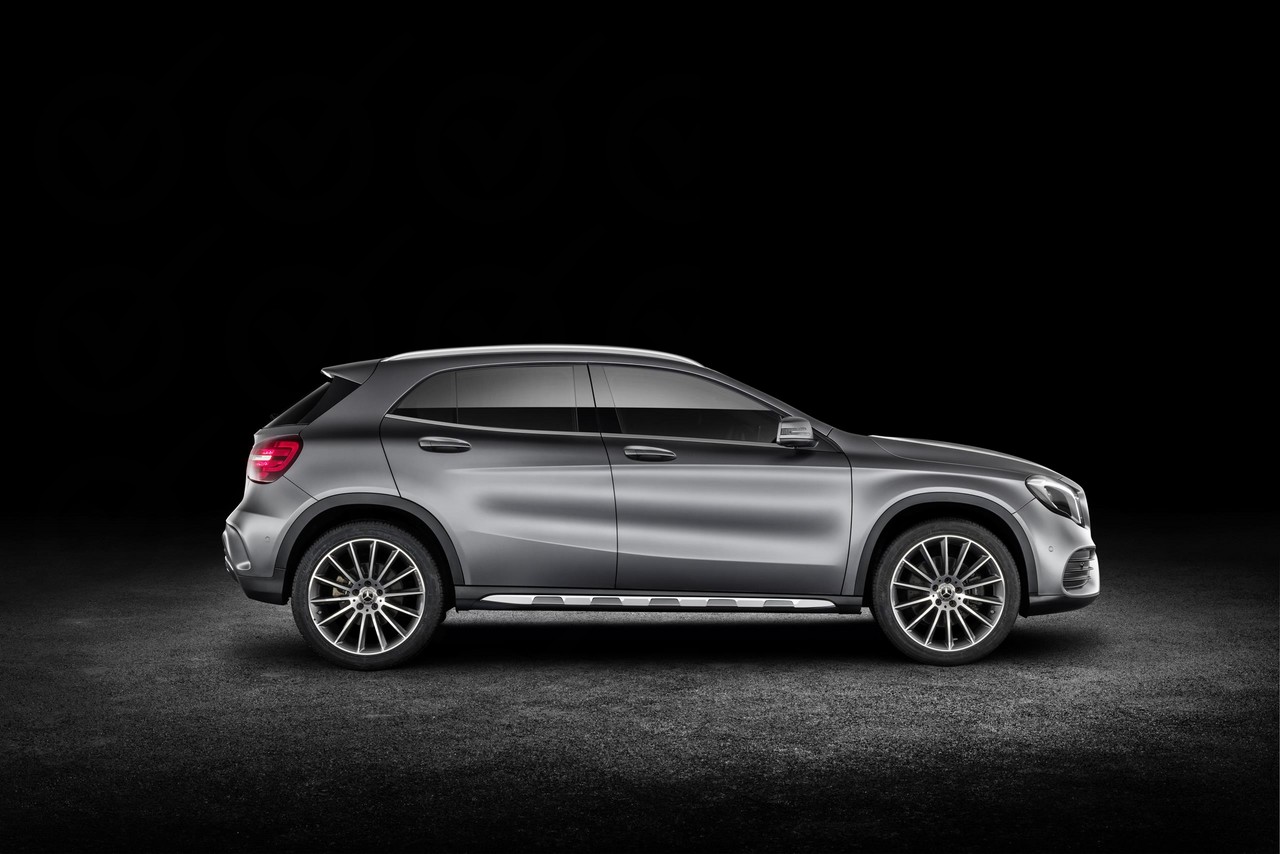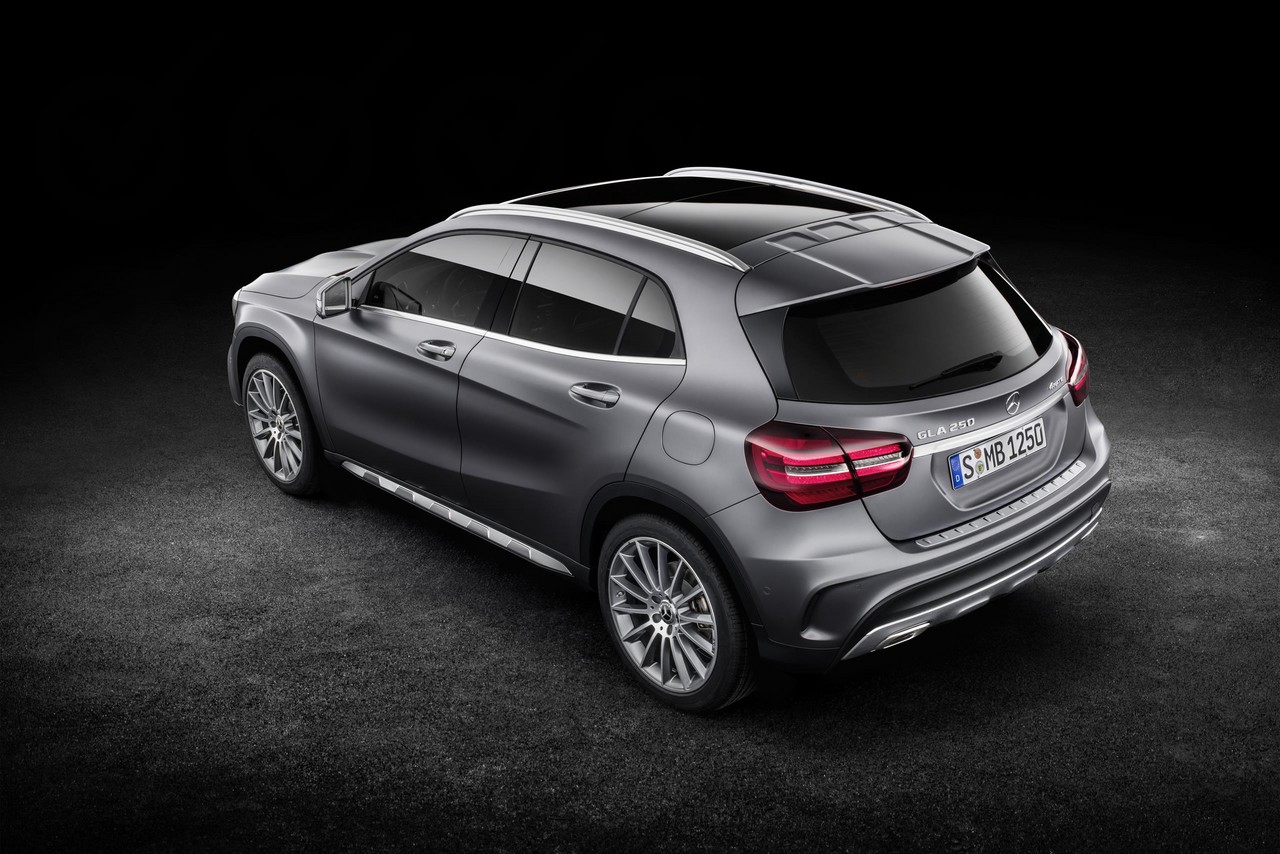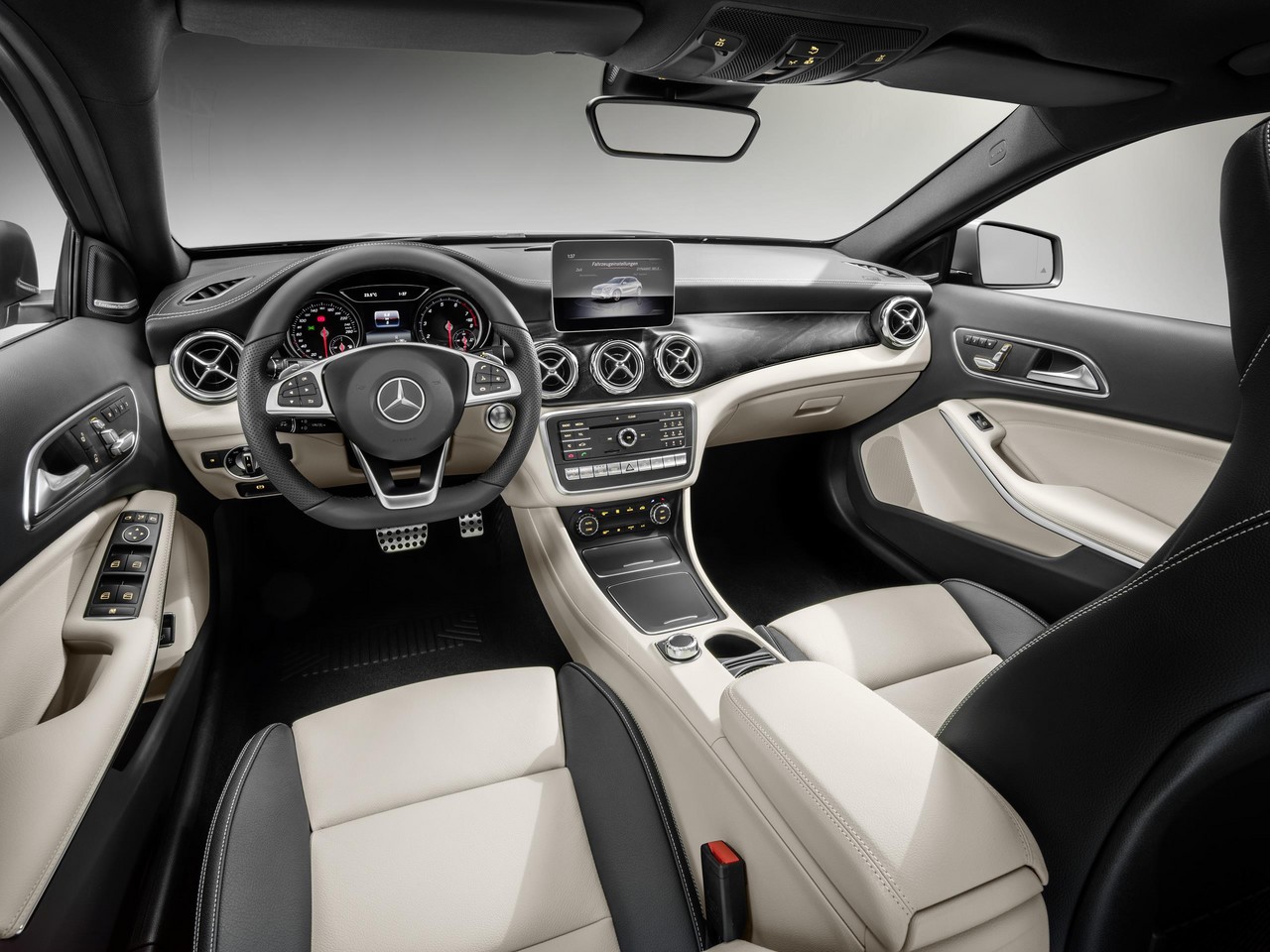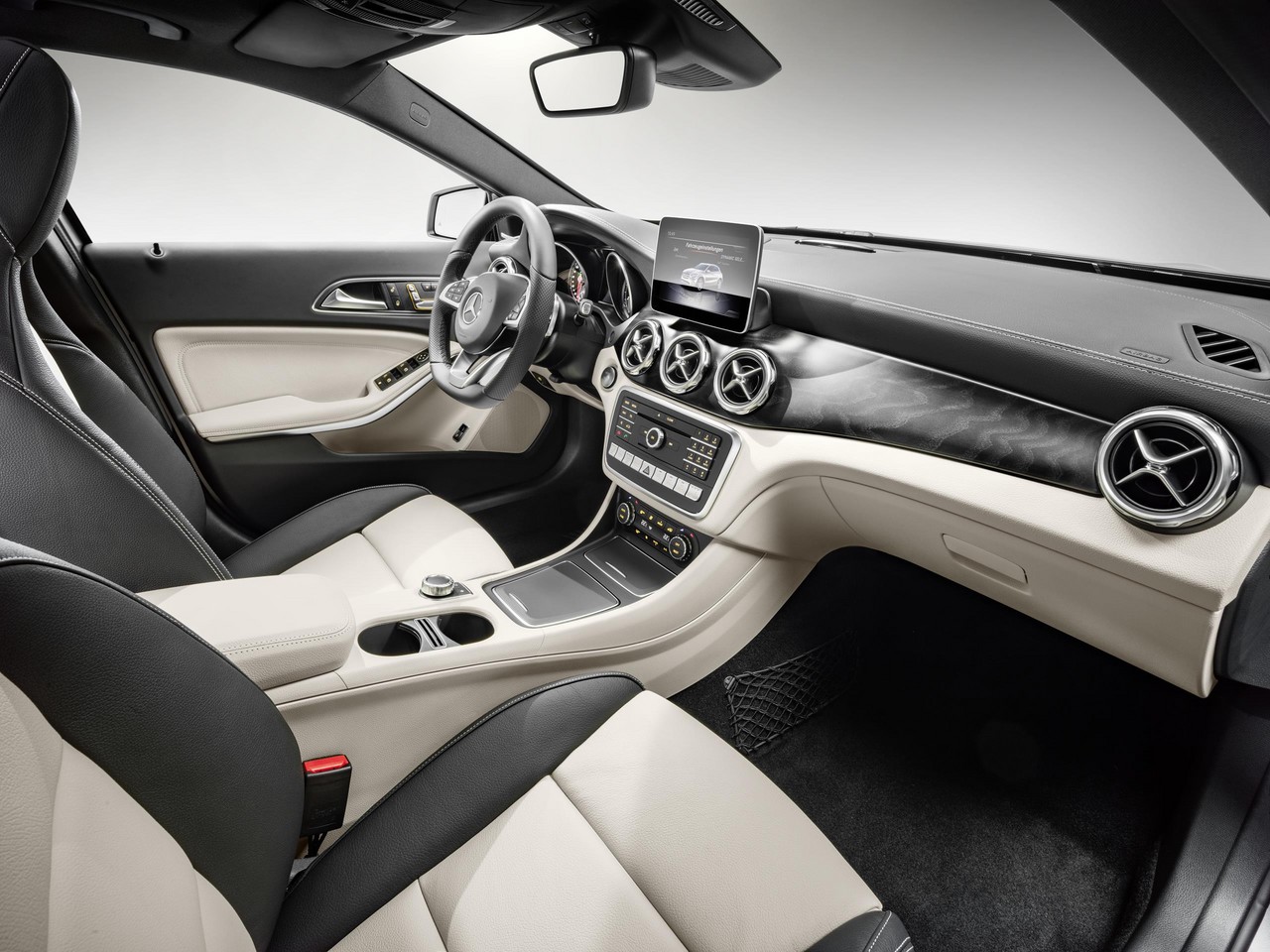
- Fuel-efficient diesel powertrains
- Impressive ride/handling balance
- High standard of interior fit and finish
- Small turning circle
- Turbo-diesel engines lack refinement and can have intrusive stop-start operation
- Dual clutch transmission can be jerky on take-off
- Run-flat tyres are noisy
- Cramped rear seat and low roofline restricts headroom
Review: Mercedes-Benz X156.I GLA-Class (2014-17)
Overview
Released in Australia in April 2014, the Mercedes-Benz X156 Series I (X156.I) GLA-Class was a compact SUV. Manufactured in Rastatt, Germany, the GLA-Class range for Australia initially consisted of GLA 200 CDI models, with the GLA 250 4MATIC following in July 2014; in September 2015, the GLA 180 was released and the 200 CDI was renamed 200 d. All models within the GLA-Class range had an ECO start/stop function which enabled the engine to shut down when the vehicle was stationary in traffic and seven-speed double clutch transmissions.
Please note that the Mercedes X156 GLA 45 AMG has been reviewed separately.
| Engine | Trans. | Peak power | Peak torque | |
|---|---|---|---|---|
| GLA 180 | 1.6-litre turbo petrol I4 (M270 DE16) | 7sp DCT | 90 kW at 5000 rpm | 200 Nm at 1250-4000 rpm |
| GLA 200 CDI/ GLA 200 d |
2.1-litre turbo-diesel I4 (OM651) | 7sp DCT | 100 kW at 3600-4000 rpm | 300 Nm at 1400-4000 rpm |
| GLA 250 4MATIC | 2.0-litre turbo petrol I4 (M270 DE20) | 7sp DCT | 155 kW at 5500 rpm | 350 Nm at 1200-4000 rpm |
All-wheel drive (4MATIC)
The Haldex all-wheel drive system for the GLA-Class (termed ‘4MATIC’ by Mercedes-Benz) utilised an electrohydraulically controlled multi-disc clutch which was integrated with the rear axle differential. In normal driving, torque was directed entirely to the front wheels for optimum efficiency. If slip was detected at the front wheels, however, a hydraulic pump would press the clutch discs together to direct up to 50 per cent of the engine’s torque to the rear axle (i.e. a 50:50 front:rear torque split). The all-wheel drive system also provided variable torque distribution, with the front:rear split determined by vehicle speed, lateral and longitudinal acceleration, steering angle, speed difference between the individual wheels, selected gear and accelerator position.
Dimensions
Sharing its platform with the Mercedes-Benz W246 B-Class and C117 CLA-Class , the X156 GLA-Class was 4417 mm long, 1804 mm wide, 1494 mm tall and had a 2699 mm long wheelbase, while its drag coefficient was 0.29 Cd. The GLA-Class had cargo capacity of 421 litres, though this could be increased to 1235 litres when the rear seats were folded flat.
Suspension
The Mercedes-Benz GLA had MacPherson strut front suspension and independent, multi-link rear suspension (with three control arms and one trailing arm for each rear wheel). For models with the 4MATIC four-wheel drive system (detailed below), the rear axle carrier was isolated with rubber bushings for improved ride comfort. Furthermore, the electromechanical power steering (EPS) system had the following functions:
- Countersteering in the case of oversteering;
- Corrective steering when braking on road surfaces with different levels of grip (split-friction braking); and,
- Compensation for cross winds and road gradients.
Safety equipment
Standard safety equipment for the Mercedes-Benz X156 GLA-Class included dual front airbags, a driver’s knee airbag, front and rear side airbags, full-length curtain airbags, ABS, electronic brake force distribution, brake assist, electronic stability control, traction control, front seatbelts with pre-tensioners and force limiters, a blind spot warning system, an ‘active bonnet’ and Mercedes-Benz’s automatic emergency call system.
As standard, the GLA-Class was also fitted with:
- Collision Prevention Assist (radar-based collision warning with adaptive Brake Assist): operated at speeds between 7 km/h and 250 km/h, and could detect stationary objects when driving at speeds of up to 70 km/h. Collision Prevention Assist monitored the distance to the vehicle ahead, would provide visual and audible warning to the driver if there was a collision risk and would optimise braking power (adaptive Brake Assist) for when the driver depressed the brake pedal. At initial speeds of less than 20 km/h, Collision Prevention Assist could prevent rear-end collisions;
- Pre-Safe: activated by emergency braking, panic braking, pronounced over- or under-steering, critical steering movements or heavy support by the adaptive Brake Assist system, Pre-Safe would prepare the vehicle for a collision by deploying the seatbelt tensioners, closing the side windows and sunroof (where fitted) and adjusting the front passenger seat for an optimum deployment of the restraint system; and,
- Attention Assist: operated at speeds in excess of 80 km/h and assessed driver behaviour and steering movements for signs of drowsiness; if detected, the driver would be provided with visual and audible warnings.
Euro NCAP testing
In Euro NCAP testing , the Mercedes-Benz X156 GLA-Class received a five star safety rating which included a 96 per cent adult occupant protection rating and an 88 per cent child occupant protection rating. In the offset crash test, protection of the front occupants was generally rated as good, although protection of the left lower leg was rated as adequate (i.e. a slight risk of serious injury). In the side impact, occupant protection was rated as good for all body areas. In the more severe pole test, however, protection of the driver’s chest and abdomen was rated as adequate.
Features: Mercedes-Benz GLA 180
Standard features for the Mercedes-Benz GLA 180 included 18-inch alloy wheels with 235/50 R18 tyres, a six speaker ‘Audio 20’ sound system with a 14.7cm colour display, CD/DVD player, MP3/WMA/AAC compatibility, auxiliary inputs (USB/iPod) and Bluetooth connectivity with audio streaming, a Becker satellite navigation system, climate control air conditioning, cruise control with speed limiter, ‘Artico’ synthetic leather upholstery, bi-xenon headlights with daytime LED running lights, a rear fog lamp, reversing camera with dynamic guidelines, front and rear parking sensors, automatic headlights, rain-sensing wipers, a nappa leather wrapped steering wheel with gearshift paddles, 40:60 split and folding rear seats, remote central locking, power windows, power adjustable and heated mirrors with folding function, tilt and telescopic steering column adjustment, a power-operated tailgate, illuminated vanity mirrors, an electrochromatic rear view mirror, high-gloss black roof rails, a trip computer and an immobiliser.
The Mercedes-Benz GLA was also equipped with Mercedes-Benz’s ‘Active Parking Assist’ system which could identify possible parallel parking spaces – at speeds of up to 35 km/h – and automatically steer the vehicle into the space.
Features: GLA 200 CDI and 200 d
The Mercedes-Benz GLA 200 CDI and GLA 200 d were further equipped with ‘Thermotronic’ dual-zone climate control air conditioning, four-way adjustable driver’s seat lumbar support and aluminium roof rails.
Features: GLA 250 4MATIC
Compared to the GLA 200 CDI, the GLA 250 4MATIC was further equipped with 19-inch alloy wheels with 235/45 R19 tyres, power adjustable front seats with memory settings, heated front seats, directional bi-xenon headlights, an automatically dipping passenger mirror on reverse, a panoramic power-operated sunroof and a motion-sensing alarm.
Brochure
Specifications
- Specifications: Mercedes-Benz X156 GLA-Class (April 2014)
- Specifications: Mercedes-Benz X156 GLA-Class (September 2014)
- Specifications: Mercedes-Benz X156 GLA-Class (December 2015)
Related links
Review: Mercedes-Benz X156.II GLA-Class (2017-20)
Overview
Production of the Mercedes-Benz X156.II GLA-Class commenced in January 2017 and it was officially released in Australia in June 2017. From the front, the Mercedes-Benz X156.II GLA-Class could be identified by its modified bumpers and new alloy wheel designs. As standard, Australian-delivered GLA-Class vehicles were equipped with LED headlamps – the low-beam LED headlamps used projector-beam technology and had an output of 34 watts. Furthermore, the indicators, daytime running lamps and position light were designed as multi-functional fibre optic cables and were designed not to require replacement over the lifetime of the car.
The Mercedes-Benz X156.II GLA-Class introduced a range of aerodynamic measures such as –
- A low A-pillar step with corresponding A-pillar geometry;
- Optimised door mirror housings;
- A larger underbody panel for the main floor;
- An additional panel in the centre section of the rear axle;
- An optimised rear silencer with a connected diffuser;
- A roof spoiler lip and discreet side rear spoilers; and,
- Specially shaped tail-lights.
According to Mercedes-Benz, these measures reduced the drag co-efficient from 0.29 to 0.28 Cd.
Inside, the Mercedes-Benz X156.II GLA-Class had a free-standing 20.3 cm media display and introduced new seat cover fabrics, new interior trim (including chromed control panels) and new instrument dials with red needles.
| Engine | Trans. | Peak power | Peak torque | |
|---|---|---|---|---|
| GLA 180 | 1.6-litre turbo petrol I4 (M270 DE16) | 7sp DCT | 90 kW at 5000 rpm | 200 Nm at 1250-4000 rpm |
| GLA 220 d | 2.1-litre turbo-diesel I4 (OM651) | 7sp DCT | 125 kW at 3400-4000 rpm | 350 Nm at 1400-3400 rpm |
| GLA 250 4MATIC | 2.0-litre turbo petrol I4 (M270 DE20) | 7sp DCT | 155 kW at 5500 rpm | 350 Nm at 1200-4000 rpm |
Safety equipment
Compared to its X156.I predecessor, standard safety equipment for the Mercedes-Benz X156.II GLA-Class was unchanged. Collision Prevention Assist, however, was re-named ‘Active Brake Assist’.
Features: Mercedes-Benz GLA 180 d
Standard features for the Mercedes-Benz GLA 180 d included 7.0J x 18-inch five twin-spoke alloy wheels with 235/50 R18 run-flat tyres, an ‘Audio 20’ audio system with six speakers, a 20.3 cm TFT colour display, CD player with MP3/WMA/AAC compatibility, digital radio tuner (DAB+), media interface (iPod/iPhone connectivity and two USB ports), smartphone integration (via Apple CarPlay or Google Android Auto), Bluetooth mobile phone connectivity with audio streaming, a Garmin Map Pilot navigation system (pre-installation) with SD card, ‘Artico’ synthetic leather upholstery, climate control air conditioning, cruise control, LED headlamps with integrated LED daytime running lights, a rear fog lamp, a rear view camera with dynamic guidelines, dusk-sensing headlights, rain-sensing wipers, 40:60 split rear seat backrests with through loading for the centre backrest, steering wheel gearshift paddles, remote central locking, power adjustable and heated door mirrors with folding function, power windows, a height and reach adjustable steering wheel, an auto-dimming rear-view mirror, push-button start, a black roof liner, illuminated vanity mirrors, an electric parking brake, a power-operated tailgate, black roof rails, a 12 volt power socket, tinted windows, a trip computer and an immobiliser.
As standard, the Mercedes-Benz X156.II GLA was fitted with ‘Parking Assist Parking Pilot with Parking Assist’ which automatically engaged when driving at speeds up to 30 km/h. Parking Pilot could identify parallel and right angle parking spaces, while the Parking Assist function could provide automated steering to manoeuvre the vehicle into the space as the driver controlled vehicle speed.
Features: Mercedes-Benz GLA 220 d
Compared to the GLA 180 d, the GLA 220 d was further equipped with 18-inch five-spoke alloy wheels, dual-zone climate control air conditioning (‘Thermotronic’), a proximity key, aluminium roof rails and ‘Hands-Free Access’ which enabled the tailgate to be opened and closed via a foot movement beneath the rear bumper.
Features: Mercedes-Benz GLA 250 4MATIC
The range-topping Mercedes-Benz GLA 250 4MATIC was distinguished by its 8.0J x 19-inch five-spoke alloy wheels with a matt black finish and 235/45 R19 tyres, power adjustable front seats with memory function, heated front seats, a panoramic sunroof, automatic tilting of the passenger side door mirror on reverse, ambient lighting and alarm system. Beyond this, standard features for the GLA 250 4MATIC also included:
- Adaptive Highbeam Assist: automatically adjusted headlamp range according to the prevailing traffic situation for optimal illumination and without dazzling other drivers;
- Adaptive Damping;
- Mercedes-Benz’s ‘Direct-steer’ (i.e. variable steering ratio); and,
- An ‘Off-Road Engineering Package’: when activated, throttle mapping, gearshift points, ABS and stability control settings were adjusted for better traction on loose surfaces.
Specifications
Related links
- Daimler Media: Mercedes-Benz X156.II GLA-Class (January 2017)
- Wikipedia.org: Mercedes-Benz X156 GLA-Class


